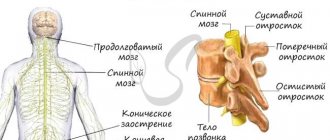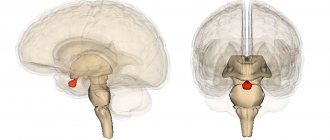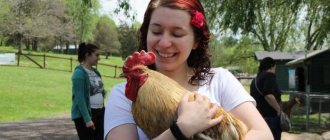The term “cognitive” translated into Russian means cognitive. Cognitive psychology is the psychology of knowledge.
The cognitive direction in psychology arose in American science in the 1960s as an alternative to the dominance of behavioral concepts. In 1967, Neisser’s book of the same name appeared, giving its name to a new direction in psychological science.
The emergence of cognitive psychology is sometimes called a kind of revolution in foreign (primarily American) psychological science. Indeed, since the 1920s. the study of attention, thinking, and perception slowed down sharply, and in American psychology these processes were actually ignored altogether. In behaviorism, which dominated American psychology in the first half of the 20th century, this view was determined by the very interpretation of the subject of psychology. Cognitive psychology has rehabilitated the concept of the psyche as a subject of scientific research. She returned the subjective aspect to the subject of psychology.
Modern Perspectives
Contemporary perspectives in cognitive psychology generally address cognition as a dual process theory, outlined by Daniel Kahneman in 2011. Kahneman differentiated two more processing styles, calling them intuition and reasoning. Intuition (or system 1), similar to associative reasoning, has been defined to be fast and automatic, usually with strong emotional connections involved in the reasoning process. Kahneman says that this kind of reasoning was based on formed habits and was very difficult to change or manipulate. Reasoning (or system 2) was slower and much more unstable, subject to conscious judgments and attitudes.
Famous representatives
The emergence of this direction was facilitated by the activities of W. Neisser, who outlined its main provisions, and J. Miller, who is the founder of the Center for Cognitive Psychology.
Also among the most famous representatives of cognitive psychology are the following: J. Sperling, J. Bruner, R. Solso, S. Herbert, K. Pribram, A. Newell .
They made a significant contribution to the study of the laws of cognitive processes and cognition in general.
Types of cognitive processes
Low or basic
Sensation and perception
A sensation is something that is formed under the action of various stimuli, as well as the determination of signals from a person’s environment. He accepts them with the help of his feelings. This is how information is acquired from the environment around you. Data comes from the outside world, and sometimes from the human body. The process of perceiving a basic type includes some interpretation of the information received.
Attention! There is plenty of information around, yet each person has the ability, having received many different signal stimuli, to pay attention to what is really interesting to her. Some actions do not require attention
This is, for example, moving or chewing food. Others require attention without fail, such as speech or body language.
Some processes that are repeated often in life are done automatically. When learning to drive a car, it is difficult to immediately act in a coordinated manner, but then less and less effort is put in, as automaticity develops.
About memory
Human memory stores answers to a fairly large number of different questions. It encrypts data, it is able to save it, and then restore it if necessary. The classification of types of memory is as follows:
- Memory is short or short-term;
- Sensory type memory;
- Semantic type memory;
- Working memory;
- Autobiographical memory and others.
All of these species are capable of interacting or not. For example, if a person with amnesia remembers where he needs to go today, he may forget the name of his closest relative.
Attention and memory
Processes are complex and higher
Intelligence or mind
This concept means an ability that gives an individual the ability to solve a variety of problems. Some scientists have popularized in society the theory that there is no intelligence, but only different abilities that are used according to the situation or activity.
On a note
In order to skillfully deal with different circumstances in everyday life, many researchers emphasize the importance of emotional intelligence
Thinking
Human thoughts are complex and heterogeneous. This process is necessary in order to make decisions, reason, solve problems, and think creatively.
In order to make these functions somewhat simpler, the human brain creates judgments and inferences. In order for mental processes to speed up, it is necessary to group events, people, objects, and so on.
Often people use shortcuts to make the thought process happen faster, and do not process information in general. In this case, there is some deviation from normal reasoning. For example, when someone thinks that they can predict the ending of a game in advance.
Speech
Speech is a complement to body language. With its help, you can reproduce entire words and sentences, use their combinations, the main thing is to give an outlet to emotions, feelings and attitudes towards the situation.
Speech can develop throughout life. Everyone's communication skills are different and can be improved with practice. When speech impairments are present, communication becomes difficult, but these impairments can be corrected with proper attention.
Thinking and speech
Cognitive approach: brief description
Cognitive scientists are very interested in conscious human behavior. It is this that becomes the main subject of scientific research. But this is done from a certain point of view in order to reveal as best as possible the main tasks posed by psychology.
The cognitive approach allows us to understand exactly how a person perceives, deciphers and encodes information extracted from the surrounding world. Thus, using this approach, the process of comparison and analysis of the obtained data is revealed. In the future, they help make decisions and create behavioral patterns.
Unusual experiment
With the gradual decline of the dominance of behaviorist concepts in 1971, psychologist Philip Zimbardo of Stanford University decided to take a bold step. Purpose of the study: to study the behavioral characteristics of a person in cruel conditions (limited freedom of action and will, pressure on moral principles). The recruitment of volunteers took about a month; not everyone was ready to calmly go to torture and obey any instructions. A total of twenty-four people were selected. In order to maintain the purity of the experiment, the candidates were divided into two groups. The first half included guards, and the other half included so-called prisoners. A laboratory assistant and an assistant psychologist acted as the main guards; Zimbardo himself became the manager of this research prison.
The subjects were "arrested" in their homes under false pretenses and under the direction of the Palo Alto police. The prisoners were transported to a fenced area, processed, assigned a number and placed in compartments. From the first minutes, the scientist began to record the mental reactions of the experiment participants and observe their behavior.
The experiment was originally designed to last two weeks, but ended after just six days due to the fact that things quickly got out of control. The “prisoners” were mocked, humiliated and even used physical violence. The “guards” quickly got used to the role and began to show sadistic tendencies, depriving the prisoners of sleep, forcing them to hold their hands up for a long time, etc. Many “prisoners” already experienced severe emotional distress and a feeling of depression on the third day of the experiment.
A significant result of the experiment can be considered the book by F. Zimbardo entitled “The Lucifer Effect” (2007), in which he described the effect of cognitive dissonance (conflict of emotional reactions in a person’s mind) and human obedience to obvious personal authority
Particular attention was paid to the influence of public opinion and the degree of government support, which can justify or reject the views of an individual
This was the most striking experiment in the field of cognitive psychology. For ethical reasons, no one else made similar attempts to repeat the experiment.
7.3. Theory of moral development l. Kohlberg
L. Kohlberg criticized J. Piaget for exaggerated attention to intelligence, as a result of which all other aspects of development (emotional-volitional sphere, personality) remain, as it were, on the sidelines. He posed the question - what cognitive schemes, structures, rules describe such phenomena as lying (which appears in children at a certain age and has its own stages of development), fear (also an age-related phenomenon), theft (inherent in everyone in childhood).
8 pages, 3666 words
Formation and development of morality
... controlled, begins to serve the numerous needs of the child’s intellectual and personal self-improvement. A new stage in the development of this form of learning in adolescents begins with imitation of external ... place in the system of relationships with peers. Usually the process of general intellectual development of children begins and ends somewhat earlier than the process of their formation as...
Trying to answer these questions, L. Kohlberg discovered a number of interesting facts in child development, which allowed him to build a theory of the moral development of the child.
As criteria for dividing development into stages, L. Kohlberg takes 3 types of orientation, forming a hierarchy: 1) orientation to authorities, 2) orientation to customs, and 3) orientation to principles.
Developing the idea put forward by J. Piaget and supported by L. S. Vygotsky that the development of a child’s moral consciousness goes parallel to his mental development, L. Kohlberg identifies several phases in it, each of which corresponds to a certain level of moral consciousness (Table 7-2).
1. The premoral (preconventional) level corresponds to: stage 1
- the child obeys in order to avoid punishment, and
stage 2 -
the child is guided by selfish considerations of mutual benefit - obedience in exchange for some specific benefits and rewards.
2. Conventional morality corresponds to: stage 3
- the model of the “good child”, driven by the desire for approval from significant others and shame before their condemnation, and
stage 4
- an attitude towards maintaining the established order of social justice and fixed rules (what is good is what corresponds to the rules).
3. Autonomous morality moves the moral decision within the individual. It opens with stage 5A
- a person realizes the relativity and conditionality of moral rules and demands their logical justification, seeing it in the idea of utility.
Then comes stage 5B
- relativism is replaced by recognition of the existence of some higher law corresponding to the interests of the majority.
Only after this— stage 6
—stable moral principles are formed, the observance of which is ensured by one’s own conscience, regardless of external circumstances and rational considerations.
In recent works, L. Kohlberg raises the question of the existence of another 7th, highest stage
when moral values are derived from more general philosophical postulates; however, according to him, only a few reach this stage.
Table 7-3. Stages of moral development according to L. Kohlberg
| Logical stage | Moral stage |
| Symbolic, intuitive thought | Stage 0 - what I want and what I like is good |
| Specific operations, stage 1 | Stage 1 - Obedience for Fear of Punishment |
| Specific operations, stage 2 | Stage 2 - naive instrumental relativism, hedonism, exchange of services |
| Formal Transactions Stage 1 | Stage 3 - orientation towards less significant others, conformity (interpersonal or group perspective) |
| Formal Transactions Stage 2 | Stage 4 - orientation towards maintaining established rules and formal order (social perspective) |
| Formal Transactions Stage 3 | Stage 5A - utilitarianism and the idea of morality as a product of a social contract (social contract) Stage 5B - orientation to the higher law and one's own conscience Stage 6 - orientation to a universal ethical principle |
Empirical testing of L. Kohlberg's theory in the USA, England, Canada, Mexico, Turkey, Honduras, India, Kenya, New Zealand, and Taiwan confirmed its cross-cultural validity regarding the universality of the first three stages of moral development and the invariance of their sequence. With higher stages the situation is much more complicated. They depend not so much on the level of individual development of a person, but on the degree of social complexity of the society in which he lives.
The complication and differentiation of social relations is a prerequisite for the autonomization of moral judgments. In addition, the style of an individual's moral judgments inevitably depends on what a given society sees as the source of moral precepts - whether it is God's will, a community institution, or simply a logical rule. The center of gravity of the problem is thus transferred from the mental development of the individual to the social and structural characteristics of society ,
macro- and microsocial environment, on which the degree of his personal autonomy directly depends.
L. Kohlberg does not distinguish between ages and adult levels. He believes that the development of morality in both a child and an adult is spontaneous, and therefore no metric is possible here.
Cognitive psychotherapy techniques
The cognitive approach to therapy is inextricably linked with the formation of cognitive psychology, which places the main emphasis on the cognitive structures of the psyche and deals with personal elements and logical abilities. Cognitive psychotherapy training is widespread today. According to A. Bondarenko, the cognitive direction combines three approaches: direct cognitive psychotherapy by A. Beck, the rational-emotive concept of A. Ellis, and the realistic concept of V. Glasser.
The cognitive approach involves structured learning, experimentation, mental and behavioral training. It is designed to assist the individual in mastering the operations described below:
— detection of one’s own negative automatic thoughts;
— finding connections between behavior, knowledge and affects;
— finding facts “for” and “against” identified automatic thoughts;
— finding more realistic interpretations for them;
— training in identifying and transforming disorganizing beliefs that lead to deformation of skills and experience.
Training in cognitive psychotherapy, its basic methods and techniques helps to identify, dismantle and, if necessary, transform negative perceptions of situations or circumstances. People often begin to fear what they have prophesied for themselves, as a result of which they expect the worst. In other words, the individual’s subconscious warns him of possible danger before he gets into a dangerous situation. As a result, the subject becomes afraid in advance and tries to avoid it.
By systematically monitoring your own emotions and trying to transform negative thinking, you can reduce premature fear, which can be modified into a panic attack. With the help of cognitive techniques, it is possible to change the fatal perception of panic attacks that is characteristic of such thoughts. Thanks to this, the duration of a panic attack is shortened and its negative impact on the emotional state is reduced.
The technique of cognitive psychotherapy consists of identifying the attitudes of patients (that is, their negative attitudes should become obvious to patients) and helping them to understand the destructive impact of such attitudes
It is also important that the subject, based on his own experience, make sure that, due to his own beliefs, he is not happy enough and that he could be happier if he were guided by more realistic attitudes. The role of the psychotherapist is to provide the patient with alternative attitudes or rules
Cognitive psychotherapy exercises for relaxation, stopping the flow of thoughts, and controlling impulses are used in conjunction with the analysis and regulation of daily activities in order to increase the subjects’ skills and focus on positive memories.
Psychology of personality constructors
It is impossible to consider cognitivism without the theory of personality constructors. It is basic when studying people's behavior in different situations. To describe it briefly, we can say that people brought up and living in different conditions cannot perceive and evaluate reality in the same way. Therefore, when they find themselves in equal conditions, they often perceive the situation completely differently and make unequal decisions.
This proves that the individual acts as a researcher who relies only on his knowledge, and this allows him to find the right solution. In addition, the individual can calculate subsequent events arising from the decision made. Thus, certain schemes are formed, called personal constructors. If they prove themselves, then they continue to be used in identical situations.
Cognitive psychology: concept, theory, basic methods
The concept of cognitive psychology refers to a branch of psychology that deals with the study of cognitive processes occurring in the human mind.
This science was born as a kind of protest to behaviorism, which completely excluded from the field of research such mental functions as, for example, attention
Having emerged in defiance of one psychological movement, today cognitive psychology has developed into a powerful science that includes cognitive linguistics, neuropsychology and many other sections, even cognitive ethology, which studies the intelligence of animals.
The essence of cognitive psychology is to consider a person as a scientist, building hypotheses and schemes, and then testing their validity in practice.
A person acts as a kind of computer, perceiving external signals in the form of light, sound, temperature and other stimuli through receptors, and then processing this information, analyzing it and creating templates on this basis that allow solving certain problems and tasks.
Cognitive psychology is based on the study of memory, attention, sensations, consciousness, imagination and other mental processes. All of them are divided into cognitive and executive, and each of them consists of many structural components (blocks).
Particular importance in this science is given to such a practical area as cognitive behavioral psychotherapy. The fundamental concept of this branch of cognitive psychology is the so-called construct.
If this template turns out to be ineffective, then a person with a healthy psyche transforms it, or abandons it completely, searching among ready-made ones or creating a new one in its place.
Who can cognitive psychology help?
Cognitive psychotherapists proceed from the assumption that the cause of all mental disorders (depression, phobias, etc.) are incorrect, that is, dysfunctional constructs (attitudes, opinions).
Thus, the main method of cognitive psychology in this regard becomes the replacement of non-working schemes in the process of treatment by creating new ones. This is done under the control and with the help of a psychotherapist, but the doctor only initiates (stimulates) the process, and then corrects its course.
As in many other areas of psychology and psychiatry, a lot depends on the patient himself.
Thanks to cognitive therapy, the following tasks are solved: treatment of mental disorders or reduction of their manifestations; reducing the risk of relapse; enhancing the effectiveness of drug therapy; addressing psychosocial causes or consequences of the disorder; correction of erroneous constructs.
Methodology
Almost any cognitive psychology study must first involve a laboratory experiment. In this case, a number of installations are distinguished; most often they consist of three components:
- all data is isolated from mental formations;
- behavior is a consequence of cognition and experience;
- the need to consider behavior as something holistic and not divide it into its component elements.
A little history
This branch of psychology originated in the mid-twentieth century in the United States of America. Before the emergence of cognitive psychology in the form in which it is now, specialists in the field of this science had previously tried to work on the difficulties that arose in the process of cognition. A few centuries ago, scientists tried to study thinking not only from a philosophical point of view, but also from a scientific one.
The greatest specificity in the psychology that exists today was brought by such scientists of that time as:
- Descartes;
- Hume;
- Kant.
Descartes' concept, namely the structure of psychological science he created, resulted in the study of one's psyche using experimental methods. Hume sought to determine the laws of associative thinking and systematized mental processes. For Kant, in turn, consciousness is a system, and the acquired skills (experience) are the data that fill this system.
It would be wrong to assume that only these philosophers are considered the basis of cognitive psychology. Of course, not only they, but also other scientists from other fields of knowledge made their own contribution to the formation and development of this field of psychological science.
It is believed that the impetus for the emergence of cognitive psychology was a meeting held in 1956 at the Massachusetts Institute of Science and Technology. It was the beginning of a revolution in psychology, which was based on the emergence of interest in the peculiarities of human cognition and in the cognitive process itself.
The emerging new direction in psychology was aimed against:
- behaviorist movement;
- removing the mental element from the assessment of behavior;
- ignoring actions aimed at the formation of cognitive processes and development.
The final basis of cognitive psychology was neobehaviorism. Then, starting from the view of the human body as a system engaged in receiving information with its subsequent processing, a new aspect was invented. This aspect is based on the concept that society has various influences on the information received.
Humanity processes the received data into a different configuration, selecting specific indicators with their further processing or complete elimination due to uselessness. During this period, cognitive psychology confidently stands on its own methodological platform, which is determined by the rapid development of computer technology and the emergence of the latest abstract studies in the field of psychology.
Basics of Cognitive Psychology
The main subject of research in cognitive psychology is such cognitive processes as:
- memory;
- speech;
- imagination;
- feelings;
- thinking.
The methods used are chronometric methods based on a clear recording of the period of time that was required to solve an existing problem or the speed of reaction to a received signal. Introspective methods are unacceptable in this case, since they do not have the correctness and accuracy that is necessary when studying marked objects.
All configurations of a person’s cognitive process and his activity are similar to the operations of a personal computer.
Disadvantages of Cognitive Psychology
The problems of cognitive psychology include the following factors:
- The lack of a general concept of personality and a general scheme for explaining cognitive processes, voiced thoughts are similar to the awareness of character traits and characteristics of cognitive actions in introspective psychology.
- Low natural reliability, that is, the ratio of representations to upcoming monitoring.
- The level of culture is not considered as a condition of influence in the formation of an individual’s cognitive capabilities.
At the moment, in cognitive psychology, which has undergone a decline, a new experimental project is being formed that explores language as the basic conventional concept used by the individual to solve various kinds of problems.
History of the scientific direction
We can say that cognitive psychology owes its emergence to American scientists. It was they who showed serious interest in human consciousness in the forties of the last century.
Over time, this interest has generated a large number of research papers, experiments and new terms. Gradually, the concept of cognition is firmly established in psychology. It begins to act as a determinant not only of human consciousness, but also of almost all of its actions. Of course, this was not yet cognitive psychology. Neisser laid the foundation for serious research in this direction, which later began to overlap with the work of other scientists. They also placed first place a person’s knowledge about himself and the world around him, which allows him to create new behavioral patterns and acquire certain skills.
It is interesting that initially this direction was difficult to consider homogeneous. This trend has continued to this day, because cognitive psychology is not a single school. Rather, it can be described as a wide range of tasks united by a common terminology and study methodology. With their help, certain psychological phenomena are described and explained.
Principles
The cognitive system includes conscious and unconscious thinking. Researchers have identified 6 principles for separating one from the other.
- The concept of unconscious thought is based on conscious and unconscious types of thinking. Conscious thinking refers to cognitive action aimed at a task or object that is the focus of attention. In an unconscious thought process, events are outside the focus of the thinking individual.
- The law of capacity implies storing no more than 7-9 elements of information in working memory. This rule does not apply to unconscious thinking.
- The “top-down” and “bottom-up” aspects indicate the issuance of a ready-made solution by the subconscious sphere after absorbing the facts in their entirety, while the conscious mind processes the data systematically through various schemes and definitions.
- The principle of weightiness comes down to the fact that the best decisions are made by people in moments of some distraction from the important and complex tasks at hand. Therefore, unconscious thinking is often more effective than conscious reasoning.
- The principle of the rule states that answers found at the unconscious level do not always correspond to the laws of logic, since they are based on associations. Conscious decisions are always based on formal rules.
- The principle of rapprochement (convergence) involves penetrating into the essence of the problem and forgetting about it. Then unconscious thinking takes over and the deadlock is easily resolved. Some cooperation is formed between conscious and unconscious thinking.
I. Sensorimotor control structures
Stage I. 0: operational consolidation
(from 1 to 4 months).
Stage I. 1: Operational Coordination
(from 4 to 8 months).
Stage I. 2: Bifocal Coordination
(from 8 to 12 months).
Stage 1.3: Related Coordination
(from 1 to 1.5 years).
II. Referred control structures.
Stage II. 0: operational consolidation
(from 1 to 1.5 years).
Stage II. I: operational coordination
(from 1.5 to 2 years).
Stage II. 2: bifocal coordination
(from 2 to 3.5 years).
Stage II. 3: related coordination
(from 3.5 to 5 years).
III. Dimensional control structures.
Stage III. 0: operational consolidation
(from 3.5 to 5 years).
Stage III. 1: operational coordination
(from 5 to 7 years).
Stage III. 2: bifocal coordination
(from 7 to 9 years old).
Stage III. 3: related coordination
(from 9 to 11 years old).
IV. Abstract or vector control structures.
Stage IV. 0: operational consolidation
(from 9 to II years).
Stage IV. 1: operational coordination
(from 11 to 13 years old).
Stage IV. 2: bifocal coordination
(from 13 to 15 years old).
Stage IV. 3: related coordination
(from 15 to 18 years old).
The development processes that R. Case considers: 1) problem solving, 2) research activity, 3) imitation, 4) control, 5) maturation.
7.6. The theory of systematic and step-by-step formation of mental actions P.Ya. Galperin
The problem of the relationship between genetic and functional development has become one of the leading ones in the work of P.Ya. Galperin .
In his theory of the systematic, step-by-step formation of actions, images and concepts, he places emphasis on purposefulness, predetermination, and systematic formation, while simultaneously highlighting and justifying the stages of this process. The purposeful and systematic formation of cognitive activity makes it possible to evaluate and experimentally test theoretical ideas about the functioning and nature of the formation of mental actions. P.Ya. Halperin set the goal of his psychological research not to state a spontaneously occurring process, but to organize a system of conditions that ensure the formation of an action with given properties.
Theory P.Ya. Galperin can be implemented as a principle of scientific research work. The provisions developed within the framework of this theory make it possible to evaluate hypothetical ideas about certain aspects of cognitive activity (subject to their adequate operationalization).
The formation of a mental or perceptual action presupposes knowledge of the structure, characteristics of the action and its systemic organization. The dynamic process of formation makes it possible to determine the adequacy of the basic provisions underlying certain theoretical views on cognitive processes and to study the functional genesis of mental processes.
In the process of stage-by-stage formation, “strategic” and “technological” issues are distinguished. Strategic issues include the methodological status of P.Ya.’s concept. Galperin, the practical and theoretical significance of such a scientific and psychological method of studying the phenomena of cognitive activity; to technological ones - the content of procedures for the systematic formation .
An equally important application of the theory of step-by-step systematic formation is the optimization of the learning process. Developed by P.Ya. Galperin's approach ensures guaranteed mastery of educational material. At the same time, the main contradiction of the educational process is resolved - between the assimilation of knowledge and its application, and the ability to transfer the acquired knowledge to new material is ensured. In addition, it becomes possible to transfer the method of acquiring knowledge, which significantly improves and speeds up the learning process. Taking into account the motivational aspect in learning and the active participation of the subject in this process makes it possible to maintain sustainable interest. The provisions of the theory of the gradual formation of mental actions have been successfully applied in systems of preschool education, general education and specialized education, higher education and vocational training in various fields. The possibility of systematic formation of various types of cognitive actions in both children and adults has been convincingly demonstrated in theoretical, experimental and applied works.
P.Ya. Galperin identified three typologization criteria
indicative basis of action:
1) Completeness of the indicative basis (complete - incomplete).
Determines the availability of information about the components of the action, the completeness of information about the subject, purpose, motive, composition of the action and the means of its implementation.
2) The measure of its generality (generalized - specific).
Determines the breadth of application of this action, knowledge of the basic units of material and the laws of their combination.
3) Method of production (ready-made or independently).
It is associated with the nature of the formation of an indicative basis for action, which can be obtained independently (by deriving particular decisions from general, previously specified criteria, by generalizing and categorizing previous experience) or through targeted external influence.
Mental actions, according to P.Ya. Galperin, represent actions with abstract images of objects and images of the properties of these objects. However, images, abstract ideas about the properties of objects can be formed only by initially being actualized in existing objects and speech. Speech allows you to describe and highlight the properties, characteristics and relationships of objects, which can then be transferred to the mental plane. The distinctive features of an object constitute a system of knowledge about it. The assimilation of knowledge is nothing more than the assimilation of actions to apply knowledge. This process is carried out in six stages:
- motivational process
- clarification of the indicative basis for actions,
- performing an action in a material (materialized) form,
- performing an action in loud speech,
- performing an action in speech to oneself,
- performing an action in a mental form.
P.Ya. Halperin developed a number of characteristics of mental actions. Analysis of the stages of the process of assimilation of knowledge and actions, the nature of this knowledge were analyzed in detail in the works of his students, primarily A.I. Podolsky and N.F. Talyzina
The structure of learning as a genetic process includes two main components: mastering the content of knowledge and actions and practicing, consolidating knowledge and actions. Concept by P.Ya. Galperin allows us to highlight not only these macrocomponents of the learning process, but also the directions of change in knowledge and actions in this process. A deep analysis of the characteristics and properties of mental actions makes it possible to identify lines of change in such parameters of mental actions as generalization, automation, speed, correctness, and strength.
Another general aspect of the application of the concept of the gradual formation of mental actions is the study of cognitive processes from the point of view of the influence of learning on development. Currently, there are two approaches to determining the composition and structure of logical operations in cognition and learning. On the one hand, this is a view of the genesis of logical operations as a process of independent cognitive search activity aimed at identifying logical relations and the operations corresponding to them. On the other hand, this is the determination of the formation of new logical structures through the processes of learning and communication, through the transfer of knowledge. In experimental studies, Galperin did not ignore the problem of determining the composition and structure of the logical components of cognition. Based on the principles of the concept of the gradual formation of mental actions, studies were carried out that showed the possibility of organizing a controlled process of constructing logical operations. In the works of L. F. Obukhova
and
G.V. Burmenskaya
showed not only the possibility of forming logical structures, the wide transfer of acquired knowledge, but also changes in the child’s intellectual position. In these studies, based on the concept of P.Ya. Halperin, a new operational scheme of thinking for the child was identified: global perception of objects is replaced by dismembered and structured, egocentric assessment - instrumentally mediated.
A special analysis of the conditions that ensure the formation of actions and mental processes with predetermined high rates, presented in the concept of P.Ya. Halperin, made it possible to distinguish three types of orientation and three types of teaching corresponding to them. The first type is characterized by an understanding of the scheme of the oriented basis of action without a sufficient understanding of the content of the material, without identifying essential features. The second type is characterized by an understanding of the content of the material, a clearer distinction between essential and non-essential features of concepts, but there remains a limitation on the use of acquired mental actions in a specific field of knowledge. The third type of learning is characterized by a quick and clear understanding of the essential and non-essential characteristics of objects, the assimilation of the conditions for action with them, the application of acquired knowledge in a wide area and the possibility of transferring mental actions to other cases within a given area. The facts obtained during the formation of mental actions according to the third type of teaching showed that the effect of mastery
Basic Concepts
One of the approaches in cognitive psychology to modeling memory work
When constructing models, cognitive psychology introduces the following concepts: working memory, long-term memory, perception, attention, language and other metacognitive processes. The goal of cognitive psychology is to understand and model the processes of interaction between these entities as formally as possible, ideally even formulating algorithms for the operation of brain functions
One of the latest process concepts is dual learning processes.
In fact, many connectionists view the brain as a deterministic biocomputer, making cognitive psychology a related science to the development of artificial intelligence. Many algorithmic models, such as the connectionist model and artificial neural network algorithms, are actively used both in cognitive psychology and by artificial intelligence developers. The difference with the latter is that cognitive scientists conduct a lot of experiments on living people and try to make the model correspond to the behavior of living people, and not just solve algorithmic problems.
It should be noted that cognitive scientists do not use any single generally accepted model of the brain, but, as a rule, work in narrow specialized areas such as learning, remembering, reading, etc. with their own local models. Moreover, within the same field of knowledge being studied, different models can compete. For example, the EZ Reader and SWIFT models compete in reading. The goal of a cognitive scientist is to model as accurately as possible the algorithms of the brain in a given type of activity, and not to comply with some abstract principles.
How does a CBT session work?
The session takes place 1-2 times a week depending on the desire, capabilities, and need for the client. A classic session does not last longer than 50-60 minutes. The thing is that longer therapy tires the client. Therefore there is no point in therapy longer than 1 hour.
In cognitive behavioral therapy, the psychologist gives homework to the patient (an example of such a task)
Before the session, the client completes homework. Completing such tasks is 70% of the success of therapy. It is impossible to achieve good results from just one hour of therapy 1-2 times a week. Therefore, it is important to complete the psychologist’s tasks. Answers to tasks will help the psychologist form a holistic picture, understand what is a priority for the client and choose the right further course of action.
For example, the occurrence of negative emotions in certain situations is caused not by the situation itself, but by the individual’s attitude towards it. Since all external information passes through the prism of the psyche and is transformed, causing negative emotions.
Therefore, a recorded negative emotion will help a psychologist create an action plan that will help change a person’s habitual pattern of assessments and judgments. Thus, the attitude towards such situations will change.
Cognitive is... What is cognitive science, cognitive?
The word “cognitive” comes from the noun “cognition” and the Latin cognitio “to know.” It is used in a number of complex scientific terms, one way or another related to the human capacity for cognition. What is the meaning of the word "cognitive" in itself and what do the associated terms mean?
Cognitive science, cognitome and cognitive ethology
The human brain is the main area of study of the science of knowledge, cognitive science. With a focused study of the brain, some of its capabilities were identified, called cognitive. These are the highest functions of the brain, thanks to which a person is considered an individual: a coherent, consistent and logical flow of thoughts, awareness of oneself as an individual, spatial orientation, the ability to calculate, understand, speak, reason, draw conclusions and direct learning.
To clearly define the totality of cognitive skills of the human brain, Konstantin Vladimirovich Anokhin (a recognized Russian neuroscientist) coined the term “cognitome”. The concept of cognition calls the problem of the brain interdisciplinary: biomedical, technological and existential.
Rapidly deteriorating memory and attention are the main signs of decreased brain function. We can say that this is cognitive “death” for the neurons of the brain, during which dementia almost always inexorably develops.
This can be facilitated by constant stress, unhealthy diet, unhealthy lifestyle and tension (nervous or physical).
Man differs from animals in the cognitive functions of his brain. Researchers have often wondered what the cognitive process means for fauna. Cognitive ethology studies the mental perception of animals to answer this question. Until recently, there was frequent debate around this discipline.
Cognitive process and cognition
The cognitive process is an action during which the human consciousness processes and filters information coming from outside. Also, the cognitive processes taking place in the human brain include the sifting and assimilation of relevant data, which is vaguely comparable to the work of modern computers.
The paradigm of cognitive experience consists of types of information encoding, conceptual mental, as well as archetypal and semantic (semantic) structures. Cognitive linguistics uses, as models and constructors, those paradigms and processes that are created and take place in the consciousness and subconscious of a person.
In turn, cognition is the very special process through which our brain successfully processes information. Outside of this science, the terms “cognition” and “cognition” are used as complete synonyms.
Cognitive graphics
In graphics, a technique called cognitive is all that artificial intelligence uses in speech recognition systems. The cognitive advantage of a computer over the brain is a hint or instant solution to a problem obtained using cognitive graphics.
Cognitive psychology
Another young field of science is cognitive psychology. Epistemological (cognitive) processes of the human psyche in this branch of the general concept of cognitive science are areas of the brain inextricably linked with issues of memorization and concentration, feelings, logic and coherence of thinking, presentation of information, and its assimilation.
Although the basic principles of cognitive psychology were laid down long before the advent of cybernetics and any complex computing and information machines, at the current stage of development it is almost entirely based on the parallel between human learning and the transfer of information into computing devices.
Psycholinguistics as a branch of cognitive psychology
Language, reason and mind, their relationship and the resulting operations are the area that is studied by current psycholinguistics.
The solid foundation on which it stands is cognitive psychology. Its conclusions are also useful in other areas of psychology.
Psycholinguistics, as a field of linguistics, describes speech messages, the extraction of their meaning, speech activity (both in isolation from mental functions and in close connection with them), and analysis of the progress of speech associated with the formation of personality.
Cognitivism: provisions
The basic principles of cognitive psychology are quite simple and understandable even to a person far from science. It is noteworthy that the main goal of this direction is to find explanations of human behavior from the point of view of cognitive processes. Scientists place emphasis not on inherent character traits, but on experience and knowledge acquired as a result of conscious activity.
The main provisions of cognitive psychology can be presented as the following list:
- study of the sensory process of cognition of the world;
- study of the process of assigning certain qualities and characteristics to other individuals by people;
- studying the processes of memory and creating a certain picture of the world;
- understanding the unconscious perception of events and so on.
We decided not to list all the provisions of this scientific movement, but highlighted only the main ones. But even after studying them, it becomes clear that cognitivism studies the processes of cognition from different angles.
Main goals
Cognitive psychology views a person as an object whose activity is aimed at searching and processing new information. All cognitive processes (perception, memory, rational thinking, decision making) are involved at different stages of information processing. Scientists draw an analogy between the work of the brain and the work of a computer process. Psychologists even borrowed the term “information processing” from programmers and successfully use it in their scientific works.
For practical applications, the information processing model is often used. With its help, the memorization process is directly decomposed into several separate components. Thus, you can study the entire process: from receiving information to issuing a specific reaction to it.
Practitioners, using methods of cognitive psychology, try to prove that knowledge primarily influences the behavior and reaction of an individual to surrounding stimuli. The difference in the perception of verbal and non-verbal stimuli, the duration and strength of the effect of a particular image are also studied.
This is what cognitive therapy is based on. It is based on the opinion that the causes of all disorders of mental processes, as well as a number of diseases of the nervous system, lie in erroneous processes of thinking and perception.
Causes of dissonance
As you already understand, it is impossible to avoid this condition. In addition, there are a lot of reasons for its appearance:
- logical inconsistency;
- inconsistencies in behavior with the samples accepted as the standard;
- contradiction of the situation to past experience;
- the occurrence of disturbances in the habitual pattern of cognitive behavior.
Any item on the list can seriously affect the behavior of a person who begins to actively look for ways out of an unpleasant state. At the same time, he considers several possible algorithms for solving the problem.
general description
Reverse psychology
The cognitive direction in psychology studies cognitive activity. It conventionally distinguishes two groups of processes: sensory and brain with consciousness. The first is responsible for receiving information from the outside, the second is for processing. The cognitive approach in psychology studies memory, perception, thinking, imagination, sensation.
Important! The discipline involves fields such as linguistics, anthropology, neuroscience and others.
This direction is very relevant in the modern world. It allows you to work on improving artificial intelligence. This is used not only to create robots, but also to develop interactive prostheses.
Cognitive psychology is a special direction in science. Its followers believe that knowledge of the world around us begins with impressions.
Through sensory perception, knowledge is transformed
After the accumulation of certain information, behavior, especially social behavior, is regulated. All processes are in constant motion, and studying them is not so easy.
Content
- 1 A little history, or how Moscow studied Moscow
- 2 The essence of the method 2.1 What is “cognitive”?
- 3.1 Experimental confirmation
- 4.1 Maslow's pyramid
[edit] Memes
Oddly enough, some of the cognitive concepts have already become memes, although their users are not aware of it.
[edit] Maslow's pyramid
Nuff said.
[edit] Rule 7 ± 2
A person can hold so many elements of thinking in his head at the same time. The rule arose from the fact that if the brain is similar to a computer, then its power, like the computer, should be limited. In working memory, for example, a person can hold from five to nine concepts, no more. That’s why it’s advisable to write down your thoughts and call this process a note - otherwise there won’t be enough memory for truly complex thinking.
By the way, cognitive distortions, automatic thoughts and other stereotypical thinking come from the same limitations. Since there are not enough brain resources to think fully at every moment of time, a person forms ready-made templates, and then follows them. Stupid? But it works quickly!
[edit] Cognitive dissonance
Main article
:
Cognitive dissonance
Nuff said. For details, see the related article.
[edit] Cognitive distortions
Main article
:
Cognitive psychology/Cognitive distortions
Evolutionary features of the brain, cockroaches in the head. Available in 100% of the population, in 95% of cases they lead to cognitive dissonance, neuroses, poor sleep, loss of money and time, and other manifestations of FGM, the causes of which are. ChSKh do not lead to breaks in patterns; on the contrary, they strengthen illusions in every possible way, being reinforcement in their titanium-concrete structure. They have enormous practical significance - in particular, for those who have chosen the path of “relatively honest taking of money from the population”: both by criminal scammers and corporations through marketing, advertising and public relations. Invented by cognitive psychotherapists.
In a little more detail, cognitive distortions (or cognitive errors) are systematic errors in thinking, due to which many thoughts, judgments, conclusions that are born in a continuous stream in our brain seem to be infallibly true, but upon objective verification they turn out to be completely false. At the same time, a person himself can be confident in his judgments for many years, because the principle of operation of most cognitive errors becomes clear only when seeing the results of ingenious scientific experiments involving large groups of subjects. Moreover, just being aware of the presence of a particular cognitive distortion does not mean that you are no longer susceptible to it, because cognitive distortions are part of the natural processes of thinking. Everyone is susceptible to all of them, but those cognitive distortions that you do know how they work are usually easily detected when analyzing automatic thoughts, your own or others' reasoning. This is very similar to optical illusions, which you actually can’t stop seeing even if you know what the trick is, but if you still look at it from a different angle or use a ruler, then everything becomes clear.
Scientists have already identified, proven and documented hundreds of such constantly occurring mistakes, and the horizon in this work is not yet visible. Their current complete list is collected on a special page on Wikipedia (the English version is updated more often). And here is a small selection of the most lulz memes:
[edit] Language prime
Meme from the field of psycholinguistics
, invented by Korzybski. Psycholinguistics states that language, the words used in particular, influence thinking processes and the psyche. Therefore, a special language is needed - devoid of the concept “is”. That is, according to the rules of the prime language, you can’t say “You’re a dick,” you have to say, “You did crap,” or, even better, “I rate what you did as crap.” So, they say, it turns out more accurately and constructively, since it eliminates some of the distortion (and causes less butthurt).
[edit] Brain plasticity
Information from a doctor named Taub, who in the second half of the 20th century ran a private clinic for the rehabilitation of people who had suffered a stroke; as a meme popularized by Norman Doidge.
- The essence from Taub is this: the cerebral cortex is not a computer with a strict division of blocks (a la the IBM PC), but rather resembles an Amiga analogue capable of reflashing itself under circumstances (in the sense, with a bunch of coprocessors): disabling one piece of the brain with a stroke, even if can lead to an ass due to the failure of what this piece was supposed to do, but due to the correct jerking off of the brain lobes adjacent to the affected one to the point of being cut off, this is very much fixed. For example, with classes that “trivially” teach a paralyzed person to crawl => walk => run like a kindergartener. In other words, after a stroke, if you don’t forget how to breathe, there is a chance to return everything to the way it was, and still, due to the efficiency of the rest of the brain, doing everything as it was is still possible many times faster than with a kindergartener (if the patient is not a philoniac, does not take days off , and in order to quickly achieve the “Monday effect” he fucks without rest, and the doctor is not a “killer”). In the case of a piece of the brain responsible for complex shit like speech being fucked up, you will have to learn more cunningly (if Broca’s area or Wernicke’s area is affected). ChSH, it was precisely this aforementioned “teaching again, like a baby” that Taub turned out to be simply a breakthrough in how effective,
compared to the “doctor’s decision” of the 1930s, to take and put on crutches a person who had lost precisely the contact of the legs with the brain from a stroke, and not the nerves themselves in legs.
pumped patient, you can find that the fucked-up piece of the brain, although it remains fragmented/filled with stagnant blood, is now being replaced by the neurons in the neighborhood doing the job properly.
- And in “Emperor's New Mind” from Roger Penrose, who in his research refers to Lawrence Weiskrantz, is described as a man who lost his sight due to the reason “it was necessary to remove part of the visual cortex of the brain” ( spoiler:
it’s an aneurysm, or epilepsy
)
, an almost 100% ability was revealed to “guess” which of the figures was being shown to him.
From Norman Doidge the gist is this:
- If you were born with only one hemisphere of the cerebral cortex, then you can go and become a normal person with a job and a license to drive a car (spoiler:
not without mistakes like 100,500 scratches and chips on it from any curb, but with a perk (somehow “in five seconds you can guess what day of the week was on such and such a date decades ago”)
,
and you’ll only get to the doctor for a head scan by accident. - If you fap a lot on pron, then due to the exploitation of the same neural circuits, various kinds of fetishes and more will come and go. Insomnia for “vanilla sex” is treated SUDDENLY with a nofapophone.
- In cases of hardcore BDSM fetishes of specific patients, there is a clear connection with rickets and the corresponding hospital childhood.
Already different
Taub, already in 2007, reported an interesting cool story with pictures: a man gradually lost his brain from the inside and nevertheless lived a full life until the age of 44 in the role of a “civil servant”, which seems to hint at how much mosca people still use . And there is only one solution: the hydrocephalus, seeing an improvement, removed the mounted injection in the head (the same one, IRL, aka “drainage”), which is why the intracranial fluid was quietly putting pressure on the brain for as many as 30 years.
[edit] Weighting coefficients @ Neural network
The parameter for the strength of connection between one neuron and another varies from 0 to 0, (9). Explains the main difference between the brain and the anon’s bakery: in the brain there simply cannot be a binary number system in the form of one signal taken as a threshold signal (that is, as a standard “one” signal, the absence of which gives an even zero), all signals from the neuron to the strength of a neuron changes back and forth, which depends on a ton of reasons (the throughput of the membrane between neurons, the state of the neurons themselves, the respawn of neurons).
- This, ChSKH, was implemented in several places at once. Available:
- The power of the outgoing signal (the same for everyone, this is a neuron: it has one output channel IRL);
- The power of the incoming signal (depends on the size of the specific small process of the receiver neuron with which it is connected to the transmitter signal, or more precisely, on the number of molecules connecting their contact);
- General excitability of the neuron.
- Etc. - salt balance, surrounding magnetic background (MagStim developers guarantee this), etc.
The topic of neural networks itself is a meme of the scientific world and a developing branch of computer science and startups, since it qualitatively contrasts itself with canonical computers with a certain number of digits in the number system. In the “neural network capable of self-learning” version, which effectively imitates something living, the oche neuron is costly to implement even on the most powerful supercomputers, but 20-30 “neurons” in a combination called a “single-layer neural network” can stun those who like to recognize letters of random fonts or even take out those who are ready to analyze the foreign exchange market at their own game.
- But no one forbids creating the so-called. “optical systems” or abandon the idea of a centralized CPU and use parallel computing already on video cards (where each neuron easily gets its own coprocessor; in the “multilayer neural network” version this is implemented with a bang), which makes it easy to tinker with image recognition and other goodies, difficult to implement on ordinary computers, but which are so familiar to the human eye.
[edit] Synergy
Synergy is when, in the presence of each other, while remaining themselves, two substances or even two organizations (and, of course, two parts of the brain), themselves failing and considered “soft,” SUDDENLY with their power in the presence of each other create a particularly strong action in the body\prove to be a powerful player.
In more detail, the essence of synergy is that “sometimes you don’t need to hit just one point, even with the fastest, decisive blow.”
In the case described above with two drugs, for some desired effect it may be necessary to act on two fronts (and then substance A affects the “alpha” receptors, substance B affects the “beta” receptors, and the desired effect is achieved only by simulating some complex state when both “alpha” and “beta” are involved). Or if you need to effectively deal with a disease, then A suppresses the reproduction of the source of the disease, while B normally ruins the life of this source, reducing it to zero against the background of A).











